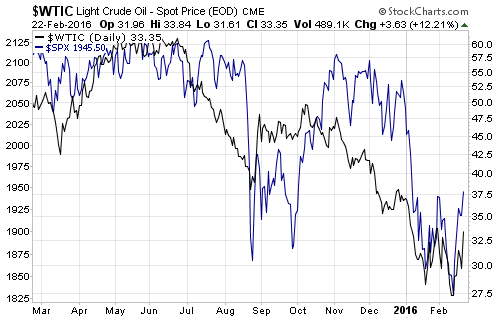This blog post is a modified excerpt from a 17th February TSI commentary.
I don’t need to read/watch the news to know that the supply-demand backdrop remains unsupportive for the oil price. All I have to do is look at the spread between spot prices and futures prices in the oil market. The larger the contango, that is, the higher the futures price relative to the spot price, the more abundant the current supply and the less price-supportive the so-called ‘fundamentals’.
As recently as a few days ago, oil for delivery in July-2016 was $6.40/barrel, or about 20%, more expensive than oil for immediate delivery onto the cash market. This was very unusual. It meant that if someone could buy physical oil and store it cheaply they could make a risk-free annualised return of almost 40% by simultaneously selling July futures contracts. The reason that every man and his dog was not eager to do this trade is that the cost of storing oil is now so high that even a contango that represents a potential 40% annualised return on a physical-futures arbitrage is not very profitable. And the reason that the cost of storing oil is now so high is that there is a much-greater-than-normal amount of oil already in storage.
Unfortunately, knowing that there is an oil glut and, therefore, that the ‘fundamentals’ remain bearish doesn’t tell us what will happen to the oil price in the future. This is because the bearish fundamentals are very well known and are factored into the current price. It is also because the fundamentals are always bearish at major price bottoms in commodities markets.
I suspect that the oil price is now close to a major bottom. This is because at its recent low the “inflation”-adjusted oil price was below its 1986 bottom and almost as low as its 1998 bottom (the two lowest points of the past 40 years). It is also because if stock markets have made long-term peaks then the commodities markets are likely to be among the main beneficiaries of future monetary inflation.
However, it’s very unlikely that there will be a ‘V’ bottom in the oil market. Considering the short-term positive correlation between the oil price and the S&P500 Index (see chart below) and the well-known bearish fundamentals, it’s more likely that the oil market will build a base this year involving a Q1 bottom and one or two successful tests of the bottom.
 Print This Post
Print This Post

